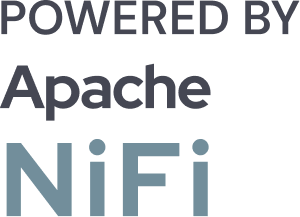Seamless User Management with LDAP Integration in Data Flow Manager
![]()

In today’s data-driven enterprises, user management is more than just administrative upkeep – it’s a foundational element of security, compliance, and operational efficiency. Especially in platforms like Apache NiFi, where data flows span across environments, ensuring that the right individuals have the right level of access is critical to maintaining control and integrity throughout the pipeline.
Data Flow Manager (DFM) is purpose-built to streamline the deployment, promotion, and governance of NiFi data flows or process groups across environments.
When integrated with LDAP, Data Flow Manager transforms user access into a centralized, automated process. This enables seamless onboarding, precise role assignments, and instant revocation of permissions, all synchronized with your organization’s directory services. This integration not only enhances security but significantly reduces administrative overhead, setting the stage for scalable and secure data operations.
In this blog, we’ll dive into how this seamless integration enhances operational efficiency, strengthens security, and scales effortlessly with your growing data infrastructure.
What is LDAP?
LDAP (Lightweight Directory Access Protocol) is a standardized protocol used for querying and modifying directory services over a network. In simpler terms, it acts as a central directory that stores user credentials, group memberships, roles, and access permissions. This directory can be accessed by various systems and applications to authenticate users and authorize their actions.
Originally developed to support large-scale enterprise networks, LDAP is designed for high availability, fast search performance, and secure access to identity-related information. It serves as a single source of truth for managing user identities, reducing the need for maintaining separate user databases in each system.
LDAP directories are structured in a hierarchical format, making them highly scalable and organized. Whether you’re integrating with internal systems or third-party tools, LDAP ensures consistent and secure access control.
Why LDAP Matters
In today’s distributed and security-conscious IT environments, centralized identity management is no longer optional — it’s essential. LDAP plays a critical role in enabling secure, scalable, and efficient access control across an organization’s digital ecosystem.
Here’s why LDAP is important:
- Centralized Control: With LDAP, IT teams can manage all user accounts and permissions from one place, ensuring consistency and reducing administrative overhead.
- Seamless Integration: LDAP integrates with a wide range of systems and applications, making it easier to enforce security policies across platforms.
- Improved Security: Centralized authentication reduces the chances of password mismanagement, orphaned accounts, and unauthorized access.
- Faster Onboarding/Offboarding: New employees can be granted access instantly, and departing users can be removed in real time, minimizing risks.
- Supports Compliance: With unified user management, audits become simpler and compliance with regulations like GDPR, HIPAA, or ISO standards becomes easier.
How LDAP Integration Transforms User Management in Data Flow Manager
In fast-paced organizations, manually creating, updating, and revoking user permissions can lead to inconsistencies, security risks, and wasted time. With LDAP integration, Data Flow Manager (DFM) revolutionizes how teams authenticate users and control access.
1. Centralized User Authentication
Instead of a separate login, Data Flow Manager enables you to leverage your organization’s existing LDAP directory, whether that’s Microsoft Active Directory, OpenLDAP, or another LDAP-compliant service, as the single source of truth for identities.
- Real-Time Sync: Password changes, account lockouts, or group updates in your directory are reflected instantly. No lag, no manual imports.
- Unified Audit Trail: Every login and authentication event in Data Flow Manager is logged against the same credentials you use elsewhere, simplifying audits and forensic investigations.
- Single Sign-On (SSO) Friendly: By routing Data Flow Manager authentication through your LDAP-backed identity provider, you can pair it with SSO solutions, reducing password fatigue for users while enforcing strong, organization-wide security policies.
2. Seamless Role-Based Access Control
Rather than manually assigning permissions one user at a time, you define roles and policies centrally in LDAP and map them into Data Flow Manager’s access model.
- Granular Permission Sets: Beyond basic read/write, you can tie LDAP group membership to fine-grained controls (for example, only certain groups can promote flows from staging to production).
- Policy Inheritance: New directory groups automatically inherit pre-configured permissions, ensuring that as teams expand or reorganize, policies scale without extra effort.
3. Consistent Access Across Environments
One of the biggest sources of drift and human error is manually recreating permission sets in each environment. With LDAP integration:
- Automatic Environment Provisioning: When you add a new NiFi environment, Data Flow Manager pulls in the same directory structure and permission mappings, with no extra setup.
- Cross-Environment Visibility Controls: Administrators can centrally decide which roles can view or modify NiFi data flows or process groups across environments, enforcing separation of duties with a single click.
4. Streamlined Onboarding & Offboarding
Time-to-productivity (and time-to-security-risk) is slashed when user lifecycle events are handled automatically:
- Instant Provisioning: As soon as an employee is added to the “NiFi Users” LDAP group, they can log into Data Flow Manager and start working, no tickets, no waiting.
- Immediate Revocation: Disabling or removing a user from LDAP instantly revokes all Data Flow Manager access, preventing orphaned accounts and insider-risk exposure.
- Audit-Ready Documentation: Every onboarding/offboarding event is captured in Data Flow Manager’s audit logs, with directory timestamps and change reasons, aiding compliance with standards like GDPR, HIPAA, or SOC 2.
Why It Matters for Admins and Teams
For IT Administrators
- Slash Manual Work: Eliminate hours spent copying users between systems or troubleshooting access mismatches.
- Strengthen Governance: Central policies reduce configuration drift and ensure your access controls are always aligned with corporate standards.
For Data and DevOps Teams:
- Focus on Outcomes: Spend less time filing tickets and more time building and optimizing data flows.
- Know You’re Secure: Work confidently, knowing that your permissions mirror enterprise-grade security policies.
The Impact of LDAP Integration on Data Flow Manager Operations
LDAP integration brings a fundamental shift to daily operations in Data Flow Manager by:
- Boosting Operational Efficiency: Admins spend less time on user management and more on strategic priorities.
- Enabling Seamless Scalability: User growth no longer adds complexity—new users inherit permissions automatically.
- Strengthening Security & Compliance: Centralized access control simplifies audits and supports regulations like GDPR and HIPAA.
- Enhancing Collaboration: Clear, role-based access empowers cross-team work without delays or permission issues.
With LDAP, Data Flow Manager isn’t just a tool for automation; it becomes a secure, scalable platform that keeps your access governance tight and effortless.
Conclusion
Integrating LDAP with Data Flow Manager revolutionizes how organizations handle user authentication and access control. Centralizing identity management eliminates manual overhead, reduces security risks, and ensures consistent permissions across all environments. This seamless connection empowers teams to focus on what matters most – optimizing data workflows without worrying about access complications.
Ultimately, LDAP integration transforms Data Flow Manager into a scalable, secure, and user-friendly platform that aligns with enterprise governance standards. Whether your organization is growing rapidly or prioritizing compliance, this integration offers a robust foundation for efficient and secure operations. Start your 15-day free trial!
![]()

